| OUR HISTORY
My name is Isabel Alves and I've owned Bobtails since 1990.
As long as I can remember, I’ve always loved dogs. I’m the only one in the family to love dogs, so no matter how hard I’d beg for a puppy my parents never allowed me to have one. Instead I had snails, silk worms, fishes and hamsters, which of course are not exactly the same as a dog.
When I was 12, I started a collection of dog cards. That was the first time I saw a picture of a Bobtail. As I always knew I would have a dog, no matter how long it would take, I began wondering about it. It had to be a shepherd dog (as I rate sheepdogs the most intelligent and friendly dogs), a medium sized dog, not too small nor too big (something around 55-65 cm would do), with long hair (short coated dogs are not actually dogs, for me …), and light coloured. Given these “requirements”, my “list” was restricted to only two breeds: Briards and Bobtails. As Briards were said to have sometimes a nasty temper, and I liked the white/grey look, I decided on the Bobtail.
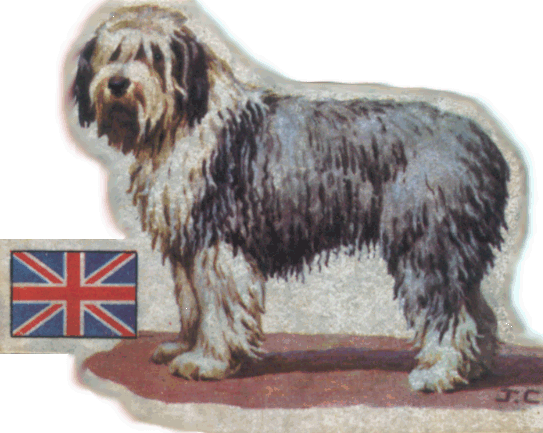
My first picture of a Bobtail
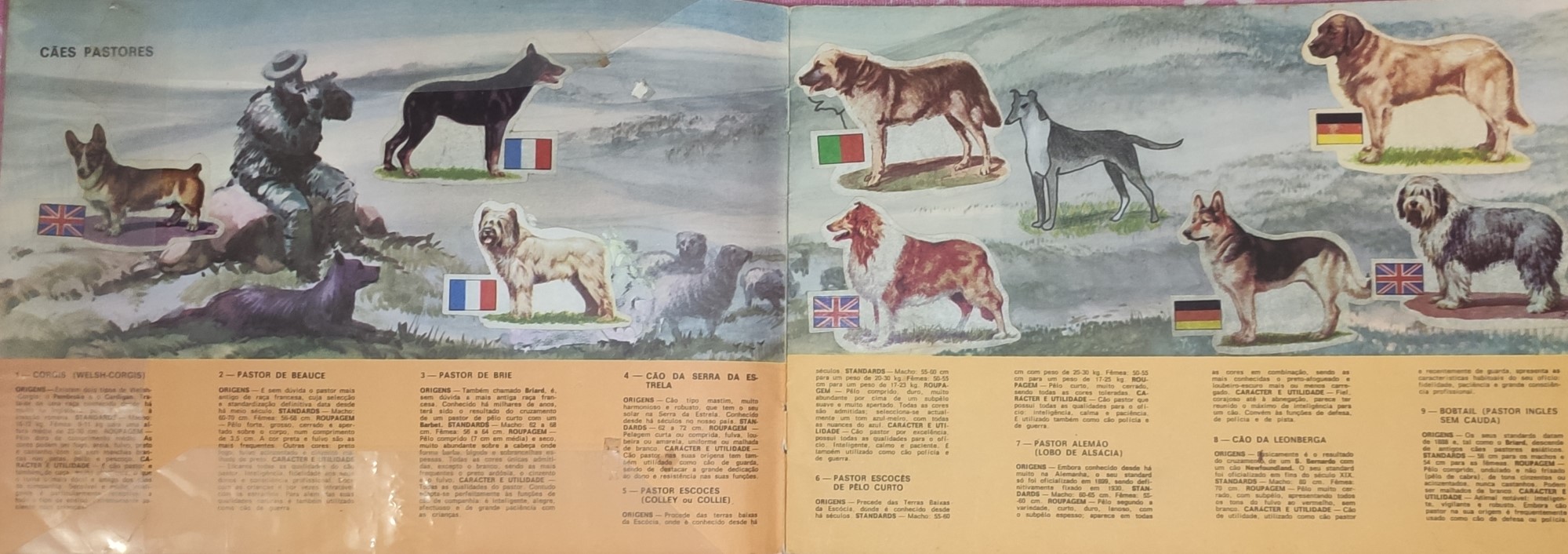
In the mean time, I finally convinced my parents to allow me to keep a dog. It was a mongrel puppy bitch (with some Yorkie blood somewhere) that became my companion and lived to the age of 12.
|
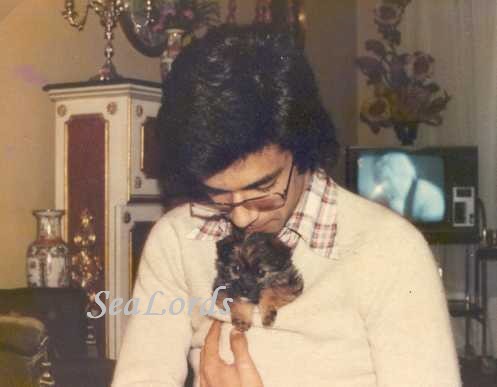
Noucky - the day she arrived home
|
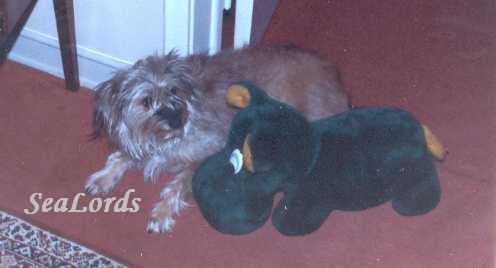
Some years later
|
|
When Noucky died, after surpassing the grief of loosing her, and as I was finally living on my own, I decided that it was the time to finally have a purebred, Bobtail puppy bitch. It was not easy though. I finally found myself heading towards France to collect my first puppy. She was to become F.Wendy d’al sola de Bonabosc (Ch. Amadeus Lover des Korils d’Armor x Up and Down du Moulin du Pont). The breeder, M. Danoy, showed us the photos of the ancestors and their show achievements, the commercial that he had made for Pedigree, and convinced us that we should show our little girl. When we received the pedigree, we found out a lot of funny names and a lot of Champions too. So we decided to enter Wendy in a show. Wendy took Best Puppy and I got hooked on shows.
|
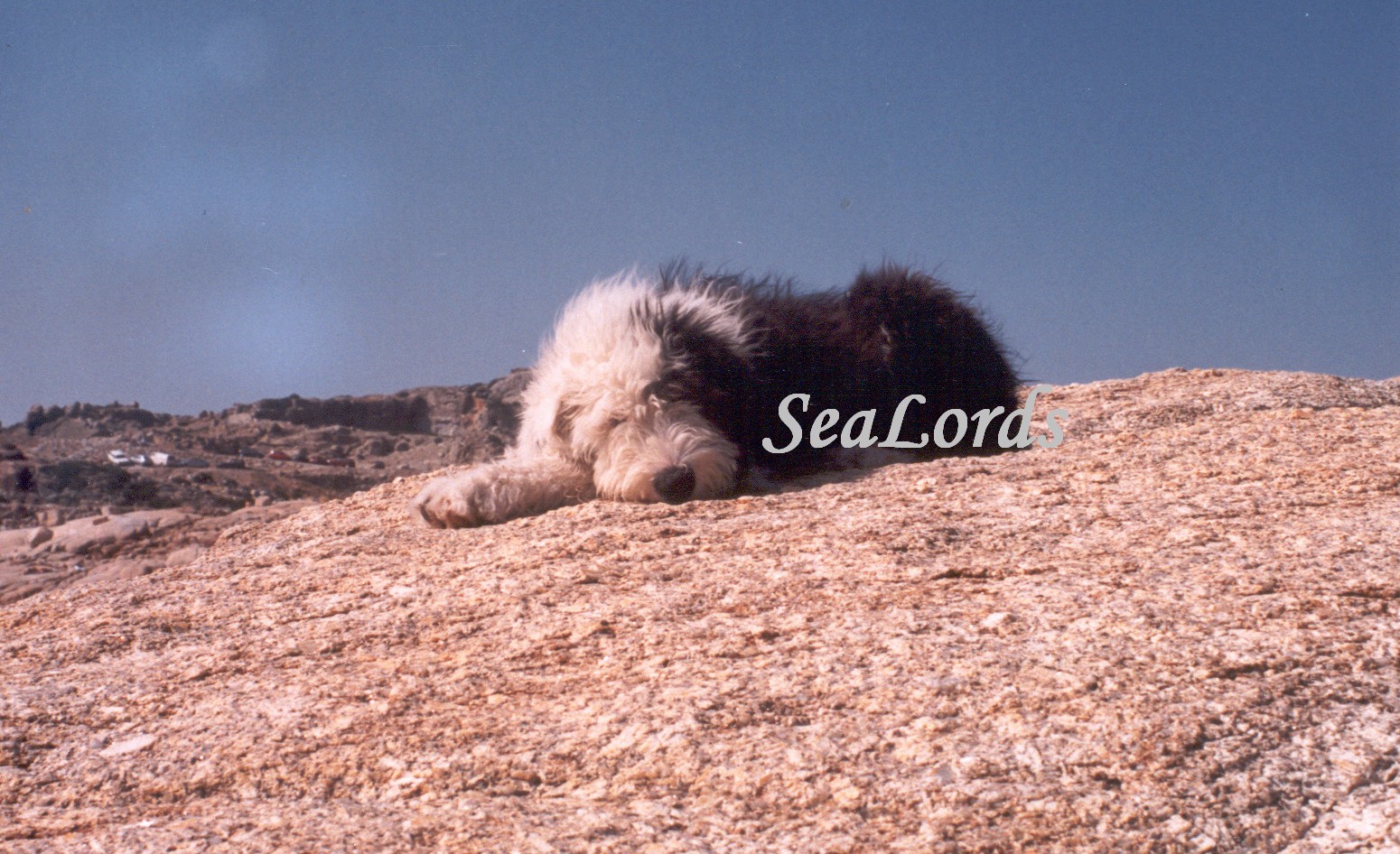
|
|
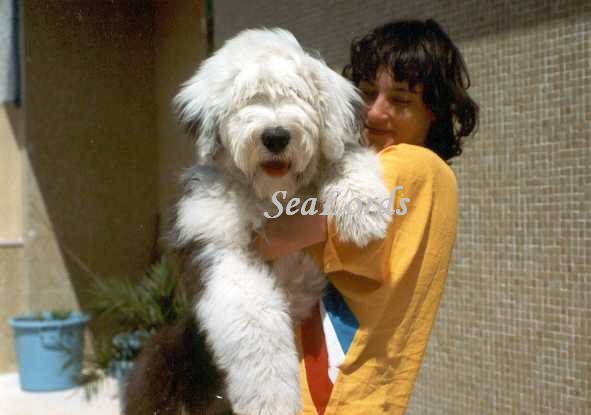
Me and Fleur - back in 1991 !!!
|
After some time we set off to France again, and brought Fleur d’al sola de Bonabosc, with Pelajilo and Wenallt blood behind (pedigree). She was to become my foundation bitch. I always loved her super memory, her sense of humour, the ability to learn quickly (the things that she accepted to learn) and the true Bobtail behaviour regarding humans. It was her that truly hooked me on Bobtails and proved that my choice, how silly it could be at the start, was absolutely right. Since she was 3 months old, she went to work with me every day and was adored by everyone. When we arrived every morning, she would visit my colleagues, who always had a treat for her. She could smell food from a 20 m distance and liked to play the “starving dog” act - with great success I must confess. |
Two books made a big impact on me and definitely changed my life for ever (maybe not for the better ...). The first was "Le Best of Bobtail" published by the Welsh Corgi et Bobtail Club de France and given to me by the Danoys. It had a section on the standard and its interpretation that was very useful in introducing me to dog terminology and dog assessment (up to then I thought, like all pet owners and untrained eyes, that all dogs looked the same), but the Champions of France section, with the correspondent pedigrees (with all those funny names ...), was simply fascinating! Not only there were certain dogs that appeared in several pedigrees (in particular Ellenglaze Ladies Choice), which indicated they were probably special, but it was also interesting to see the different breeding strategies. The second book was "The complete Old English Sheepdog", by Christina Smith (Bailey). The sections about breed history and breeding kennels in the UK and elsewhere, including Portugal, made me realize that the dogs we have at a certain time are a consequence of the work of previous breeders. So my aim from that moment on was to breed dogs to which dogs in the future could be traced back, and to see my kennel name appear in a future edition of that book! (unfortunately Christina has never updated it ...)
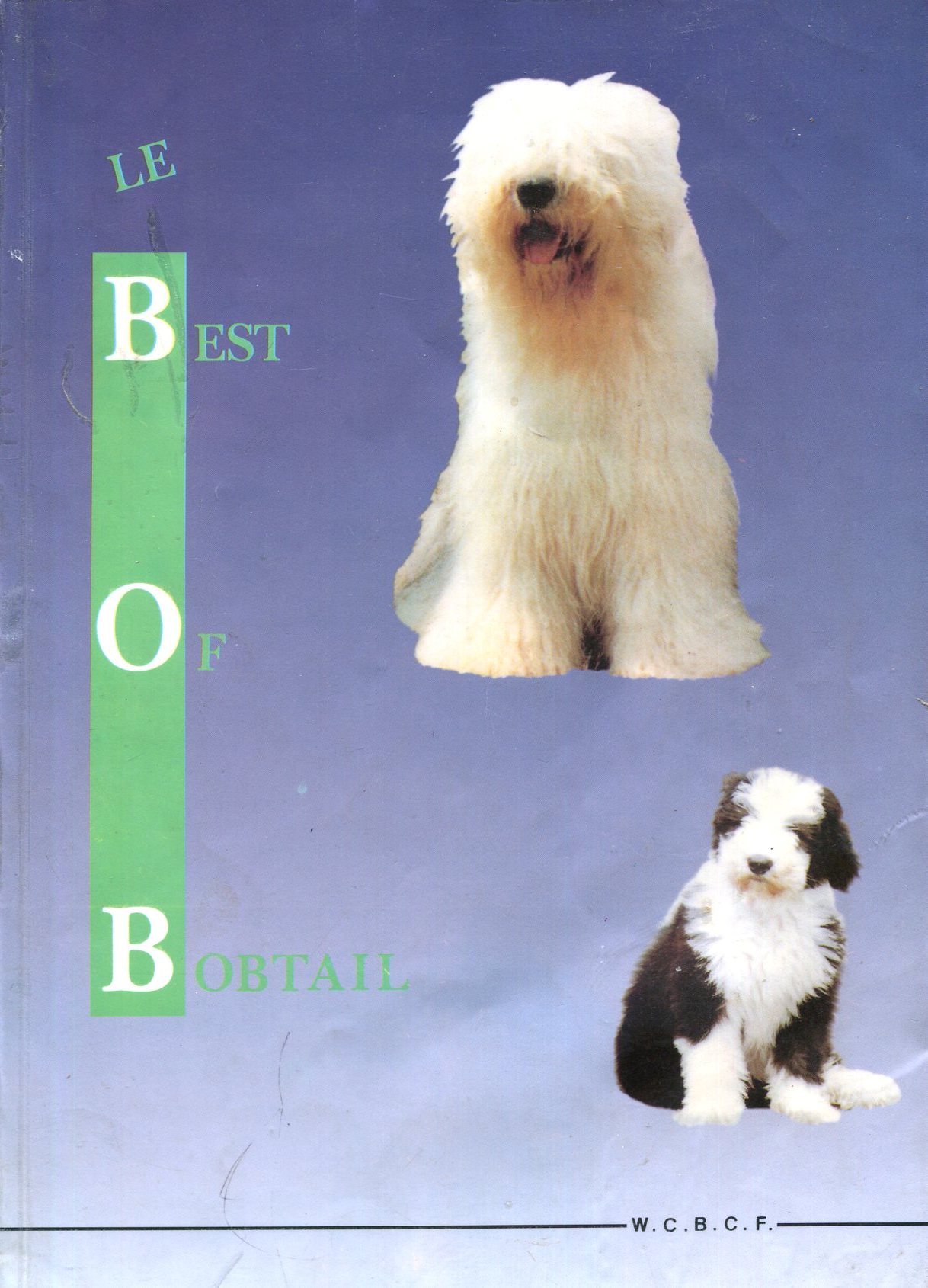 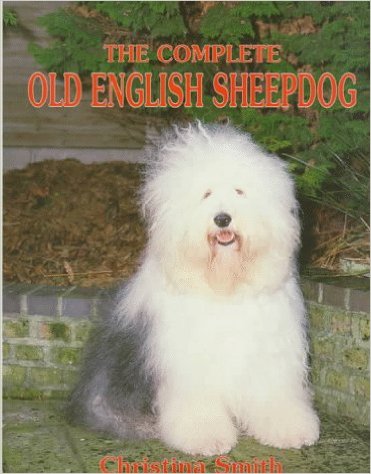
OUR KENNEL NAME
When I decided to breed, I began thinking of a kennel name. As it was a british breed and I was thinking of giving English names to the dogs, the kennel name should be English too. Eventually, the affix “SeaLords” was accepted (back in 1992) and I started breeding under that prefix (with the first litter being born in the beginning of 1994).
Why “SeaLords”? I think that the affix should have something to do with the dogs you breed, with the breeder, and/or the place he lives in. For those who don’t know, back in the 1400’s, Portuguese sailors set out from this little lost country in small ships to discover the world, which was really a great feat. For 3 centuries, Portuguese sailors were truly the Lords of the Sea (hence SeaLords, as an homage to those heroic people). The logo is also based on that. Behind the Bobtail profile, you see a triangular (or lateen) sail, which allowed sailing against the wind, and was a revolution in sea sailing at the time. In the sail, you see a cross – named “Christ’s Cross” - as you could find in the Portuguese flag at the time (as well as in all documents and even monuments). And the letter “O” is actually an astrolab, an instrument of arabic origins that the Portuguese improved, that allowed to measure the height of the stars and so to determine the position of the ships when they were in the middle of the sea.
BREEDING PHILOSOPHY
There are 3 things I have in mind when breeding:
- the standard: The standard is our Bible as breeders and the aim is to breed dogs as close to the standard as possible. So, all the bitches I use have been rated as "Excellent" by breed specialist judges and/or have won at least one CACIB at an International Show.
- health: a good dog is a healthy dog. Our breed was a working breed, so a sick or a cripple dog would be of no use. All my dogs are X-rayed and have grades appropriate for breeding. I also screen my dogs for hereditary eye diseases until a final diagnosis can be made (hereditary cataracts can appear until 6 years old and PRA until 9 years old, so any certificates issued before those ages are of limited value ...) and keep a record regarding longevity and any health problems of my dogs.
- temperament: the vast majority of our dogs end up as pet dogs, living with families that probably don’t have a deep knowledge of canine behaviour and how to deal with it. So the aim is to breed dogs that are “easy to live with”, that is, dogs with stable temperaments, and the true bobtail sweet, playful disposition.
The bringing of PCD to the spotlight in 2008 was to me a big eye opener. Though PCD was refered in all veterinary literature as a genetic disease of OES at least since the 1990's (contrary to what you see written in many OES pages it is NOT a new or recent disease, and this in fact just shows the low knowledge of many breeders, that tend to worry about things only when they knock at their own doors ...), it was being misdiagnosed/swept under the rug until Chris Beirendonck started her fight against the disease. By putting together the pedigrees of the carrier/affected dogs, it was evident right from the start that the disease was present and had been spread in the OES population by the (winning ...) line(s) everybody was revolving around for the last 20 years, so obsessively that nowadays it is virtually impossible to find a dog without these lines in the first 3 generations. In fact, it is amazing that "only" 15-20% of the european OES population was estimated to carry the defective gene when it was discovered ...
More or less at the same time, a concern about the genetic health and lack of genetic variability of pedigree dogs was raised. It is now obvious that if breeders insist in outdated theories and practices from the 19th century soon all the Kennel Clubs in Europe will set for them limits on inbreeding and number of litters a dog can sire, much lower than what is common nowadays. Our present aim is therefore to keep variability without losing quality, avoiding the overused lines and instead using dogs/lines that are absent from the majority of pedigrees in Europe. This option seems to be paying as the dogs that we have had analyzed by Genoscoper have genetic health indexes above average (see Health).
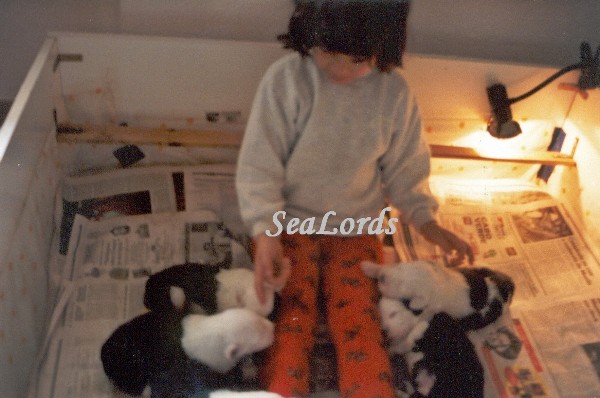 |
I only breed occasionally (one litter every 2 years, in average), and in order to keep a puppy for myself, to continue my line. So litters are carefully planned. The puppies are born and reared in the house, where they get a lot of attention and contact with the noises of the day-to-day life (TV, vacuum cleaner, etc). They are all important to us and they are treated as individuals, not as numbers or colours, so they all receive a pet name, normally given by my daughter (that I guess gets her inspiration mostly from animated films), even if most owners opt later by their own chosen pet name. They are properly dewormed and vaccinated and are registered with the Portuguese Kennel Club (FCI member) - so pedigrees are fully recognized by the other FCI members and also by the KC, AKC and other non-FCI members.
I assume a lifelong commitment with my puppies and their owners, so, besides being always available to assist the owners with every problem they may have, regarding feeding, grooming, training, etc, I'm also prepared to take back any dog, at any time, for whatever reason.
|
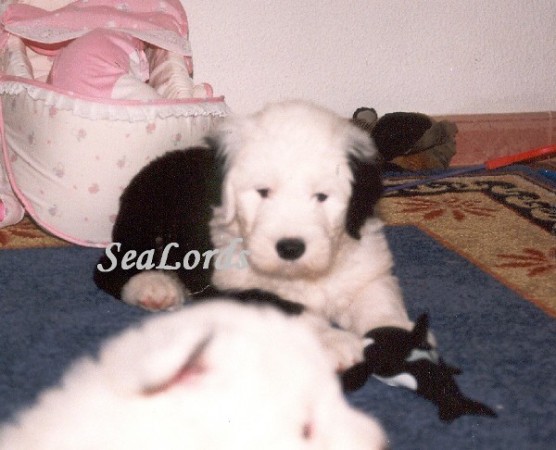 |
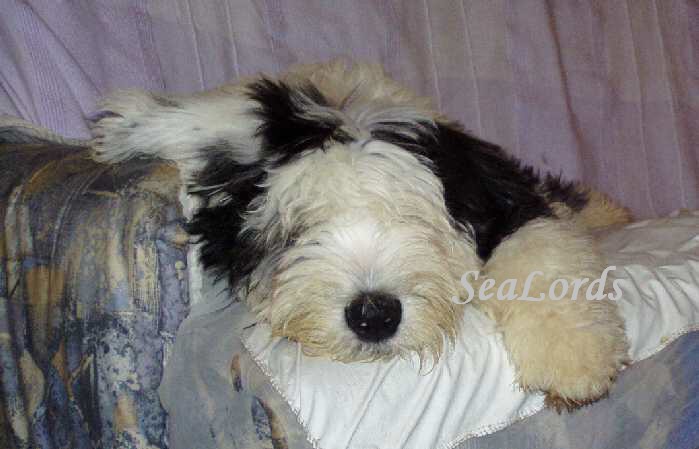
|

